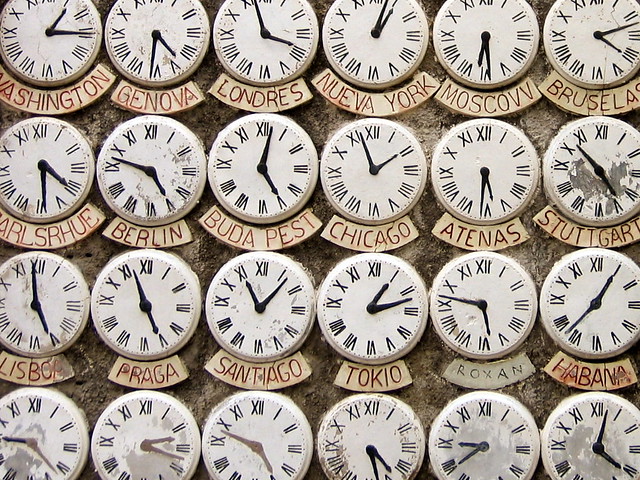
Everytime we travel across the Atlantic we realise the existence of our internal clock, mainly because of what we feel as jetlag. Our circadian clock gets out of sync, and out bodies experience difficulties to deal with the time change. This internal clock has many, important effects on metabolism and brain function. But…does it play a role in aging?
In a recent review article, Liu und Chang discuss on the role of the main body’s pacemaker in aging and metabolic control. This central time regulator lies in the brain, more specifically in the supraquiasmatic nucleus, which is part of the hyppocampus. The neurons in these area are directly connected to time-of-day stimuli coming from other sensitive neurons in the eyes, and through their activity, and the cycling behaviour of a set of circadian genes (PER, CLOCK, BMAL1, among others) centralize the timing of all other organs in the body (which also have their own clocks).

The importance of the clock in the regulation of bodily functions raises the question of its role in aging. What happens to the clock then? During aging it has been found that this central clock starts malfunctioning, so that the cycling of the involved genes is unsynchronized or the periods of the cycling change their amplitude. As a result, sleep disturbances, insomnia or extreme sleepiness can occur. Typically, these sleep interferences arise with old age.
But sleeping is not the only process affected by a malfunctioning clock: metabolic issues like diabetes can concurr, since some of pacemaker genes are also involved in metabolic regulation.
Moreover, an interrelation between “clock” malfunction and the most common neurodegenerative diseases, Alzheimer’s (AD) and Parkinson’s (PA) is described in this work.
In AD, since some of the first neurons to be affected correspond to those part of the central clock, abnormal sleep patterns, with increased daily sleepiness are considered early hallmarks of the disease. Wereas in PA, other than several different types of sleep disturbances, there is an affectation to the usual cortisol and melatonin cycles (which are intermediates in clock synchronisation at the whole body level).
From all these evidence, it seems clear that there is a strong implication of clock malfunction in aging.
Furthermore, certain proteins like sirtuins, which have been implicated in increased longevity (for instance via caloric restriction) also have an effect over the clock genes, and not only that, it turns out that sirtuin gene expression also oscillates in a circadian manner, which gives an idea of the complex interaction loops between metabolism, circadian regulation and aging.
In summary, the role of our internal clock is of great importance for aging, and most importantly as a target for aging prevention or interventions leading to extend a healthy lifespan. So from now on, take care of those rythms!
Physiological links of circadian clock and biological clock of aging. Liu F, Chang HC. Protein Cell. 2017 Jan 20. doi: 10.1007/s13238-016-0366-2
Further reading:
Impact of the circadian clock on the aging process. Fonseca Costa SS, Ripperger JA. Front Neurol. 2015 Mar 6;6:43.
Circadian regulation of cell cycle: Molecular connections between aging and the circadian clock. Khapre RV, Samsa WE, Kondratov RV. Ann Med. 2010 Sep;42(6):404-15